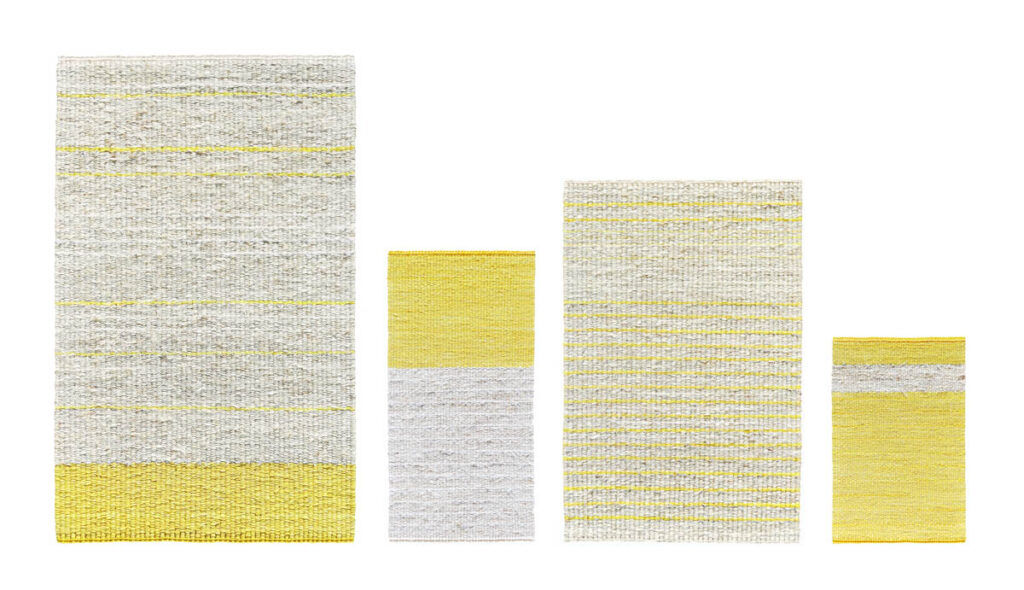G28 – Know-How: The grammar of making
✿
“…what people do with materials, as we have seen, is to follow them, weaving their own lines of becoming into the texture of material flows comprising the lifeworld. Out of this, there emerge the kinds of things we call buildings, plants, pies and paintings.”
Tim Ingold “The Textility of Making”, 2011
The second journey for Garland aims to bring thinkers and makers from different cultures together in building bridges to connect the two halves of our wider world. The September 2022 issue looks at the grammar of the making process, in particular the duality of cutting and joining. We look into basic craft processes like weaving, carving and soldering. What do these material actions tell us about how we make sense of the world?
Visual art can play a powerful role in illustrating an idea. It makes the idea vivid in a way that strikes the eye. We mostly enter a gallery with an interest in finding out the message that the artist seeks to convey.
In the material arts, including the crafts, meaning more often emerges from the physical processes employed and substances used in the act of making. Knowledge retains this physical base, as when we “grasp” concepts and get the “feel” of an idea.
With the growth of tertiary studies, material arts have been contextualised in academic ways of speaking where information is abstracted. We examine how art “explores the concept of…” something.
But as we have become increasingly aware of the way our economics have lost touch with the physical limits of the planet, it’s time to consider a more grounded understanding of creative work. How do we “make” meaning?
The concept for this issue was developed with help from these pathfinders: Cara Johnson, Carla Van Lunn, Cassy McArthur, Hanny Kusumawati, Harpreet Padam, Helen Ting, Hūfanga Dr. ‘Ōkusitino Māhina, Jaffa Lam, Kaamya Sharma, Kay Lawrence, Liliana Morais, Maria Fernanda Paes de Barros, Melinda Young, Monica Gaspar, Roseanne Bartley, Sera Waters, Sharon Peoples, Witiya Pittungnapoo and Yasmin Masri.
Joining
- Walking, thinking, making: A weaver in the world by Sara Lindsay
- Ropework: Soft garniture for life by Finn McCahon Jones
- Earth Webs: Weaving into the land by Rina Peleg
- place of not-knowing: on Arrernte Country by Pattie Beerens
- Devoted: Adding weight to weaving by Ana Petidis
- Spinning as meditation by YuddhavirSingh Jadeja
Cutting
- What is a knife? by Arlo Davis
- Wood carving in Nepal: How Buddha emerges every day by Gary Wornell
- A copper glass engraving wheel: The quest for the perfect tool by Peter Cummins
- Victor Meertens ✿ Off Cuts by Greg Pryor
- Deborah Kelly ✿ Cutting with the past to create a new order by Pamela See
- Subtle cuts: New word sculptures from Ally McKay by Miranda Hine
Cutting and joining
- 12 Camels: Take a seat by chance by Nanu Youttananukorn and Lidia Vajda
- Ran out by Shlomit Bauman
- The creative spark: Mexican heritage by hand today by Raquel Bessudo
- Other Possible Worlds: Threading together Thai communities by Luise Guest
- Julia Gutman ✿ Muses by Elyse Goldfinch
- Preliminary notes on relationships between Chinese Ge Ba textiles and the walls of Amateur Architecture Studio by Peta Carlin
Haberdashery
- MAOTA: Five yarn dyed colours, inspired by Aizome by Alisa Ota Tietboehl
- Habitat: Terracotta homes for hard-working bees by Julie Bartholomew
- Maker mythologies: Classical origin stories for the crafts by Patrick Webb
- Şevket the puppeteer finds freedom in a prison cell by Songül ARAL
Dedication
 This issue is dedicated to Lenore Tawney (1907-2007). Having originally studied sculpture, Tawney is often cited as the first artist who took the warp threads from the loom and used them to build linear constructions in space. Alongside her woven works she made delicate collages and drawings, all of which have a powerful, yet quiet intensity. Visit Lenore G. Tawney Foundation
This issue is dedicated to Lenore Tawney (1907-2007). Having originally studied sculpture, Tawney is often cited as the first artist who took the warp threads from the loom and used them to build linear constructions in space. Alongside her woven works she made delicate collages and drawings, all of which have a powerful, yet quiet intensity. Visit Lenore G. Tawney Foundation

